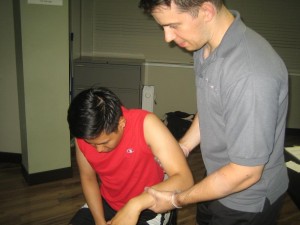Overview Of Shock
Shock takes place when the circulation system doesn’t transmit blood to the vital organs. With shock, the volume of blood is insufficient to meet the body’s requirements. Parts of the body are deprived of oxygen. The outcome is usually injury to the heart, lungs, limbs, and brain. Severe blood loss from any injury can lead to shock.
Signs And Symptoms Of Shock
- Weakness, shaky;
- Feeling agitated, confusion;

Shock takes place when the circulation system doesn’t transmits blood the vital organs. With shock, the volume of blood is insufficient to meet the body’s requirements. - Lips, skin, and/or fingernails appear blue. Cool and clammy skin;
- Fast, shallow breathing. Weak, but quick pulse;
- Nausea. Extreme dehydration;
- Inflated pupils; and
- Loss of consciousness.
Causes Of Shock
- A heart attack.
- Serious or unexpected blood loss from a wound or severe illness. Bleeding can take place internally or outside the body.
- A large decrease in body fluids; in the case of a serious burn.
First Aid For Shock
- Check for a reaction. Give Rescue Breaths or CPR as required.
- Lay the individual horizontal, face-up, but do not move the casualty if you notice a back, head, or neck injury.
- Elevate the individual’s feet. Use a strongbox, etc. Do not elevate the feet or move the legs if you notice that the hip or leg bones are fragmented. Keep the individual laying flat.
- If the casualty vomits or has a problem breathing, place him or her in a semi-sitting position (if no neck, back, or head injury). Or, turn the individual on his or her side to avoid choking.
- Release any tight clothing. Keep the individual calm and composed until medical assistance arrives.
Related Video On Shock
https://www.youtube.com/watch?v=tjOLn768RWk
